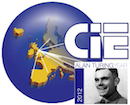 This will be a contributed talk at the Turing Centenary Conference CiE 2012 held June 18-23, 2012 in Cambridge, UK.
This will be a contributed talk at the Turing Centenary Conference CiE 2012 held June 18-23, 2012 in Cambridge, UK.
Abstract. The mate-in-$n$ problem of infinite chess—chess played on an infinite edgeless board—is the problem of determining whether a designated player can force a win from a given finite position in at most $n$ moves. Although a straightforward formulation of this problem leads to assertions of high arithmetic complexity, with $2n$ alternating quantifiers, the main theorem of this article nevertheless confirms a conjecture of the second author and C. D. A. Evans by establishing that it is computably decidable, uniformly in the position and in $n$. Furthermore, there is a computable strategy for optimal play from such mate-in-$n$ positions. The proof proceeds by showing that the mate-in-$n$ problem is expressible in what we call the first-order structure of chess $\frak{Ch}$, which we prove (in the relevant fragment) is an automatic structure, whose theory is therefore decidable. The structure is also definable in Presburger arithmetic. Unfortunately, this resolution of the mate-in-$n$ problem does not appear to settle the decidability of the more general winning-position problem, the problem of determining whether a designated player has a winning strategy from a given position, since a position may admit a winning strategy without any bound on the number of moves required. This issue is connected with transfinite game values in infinite chess, and the exact value of the omega one of chess $\omega_1^{\rm chess}$ is not known.
